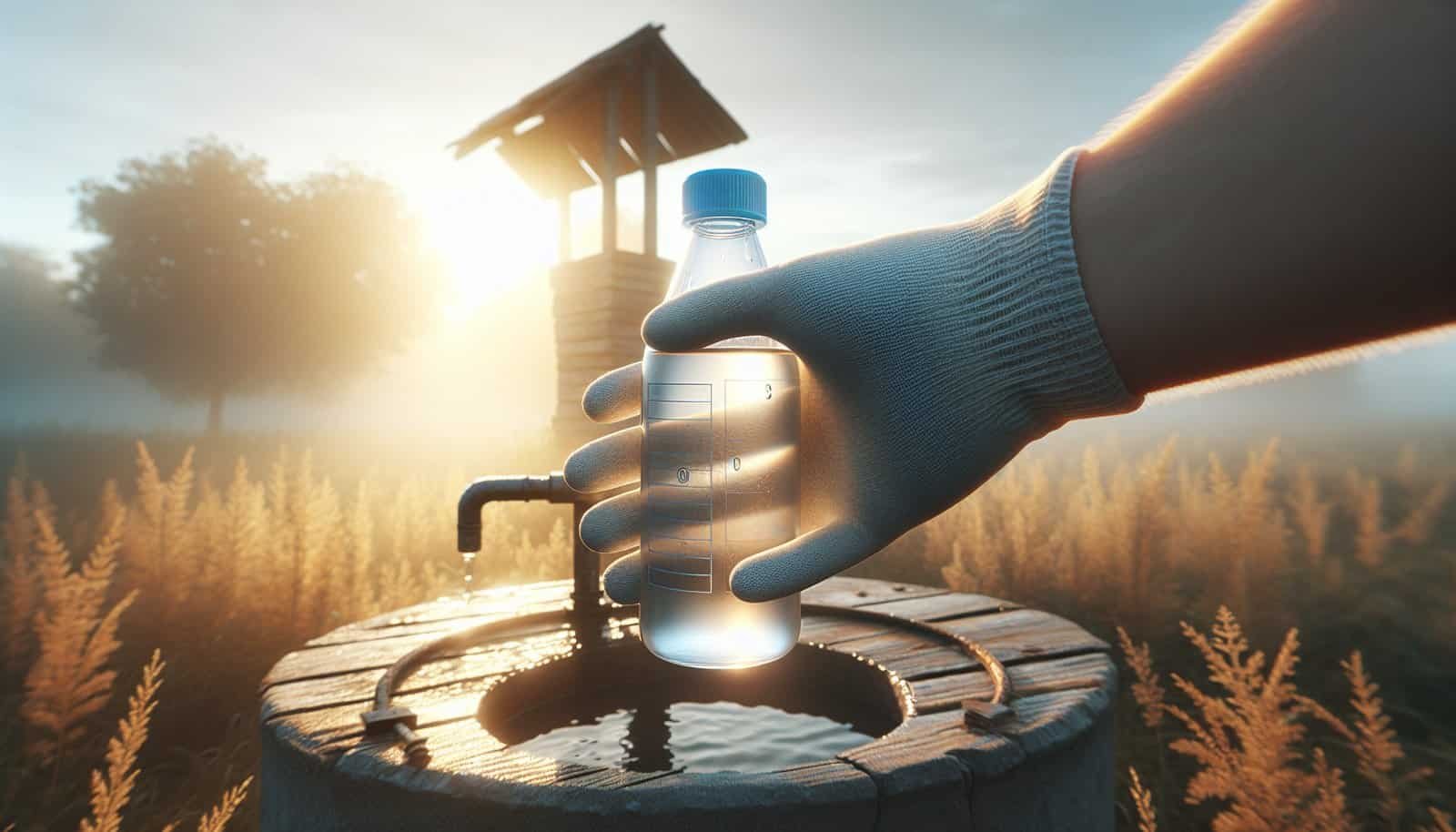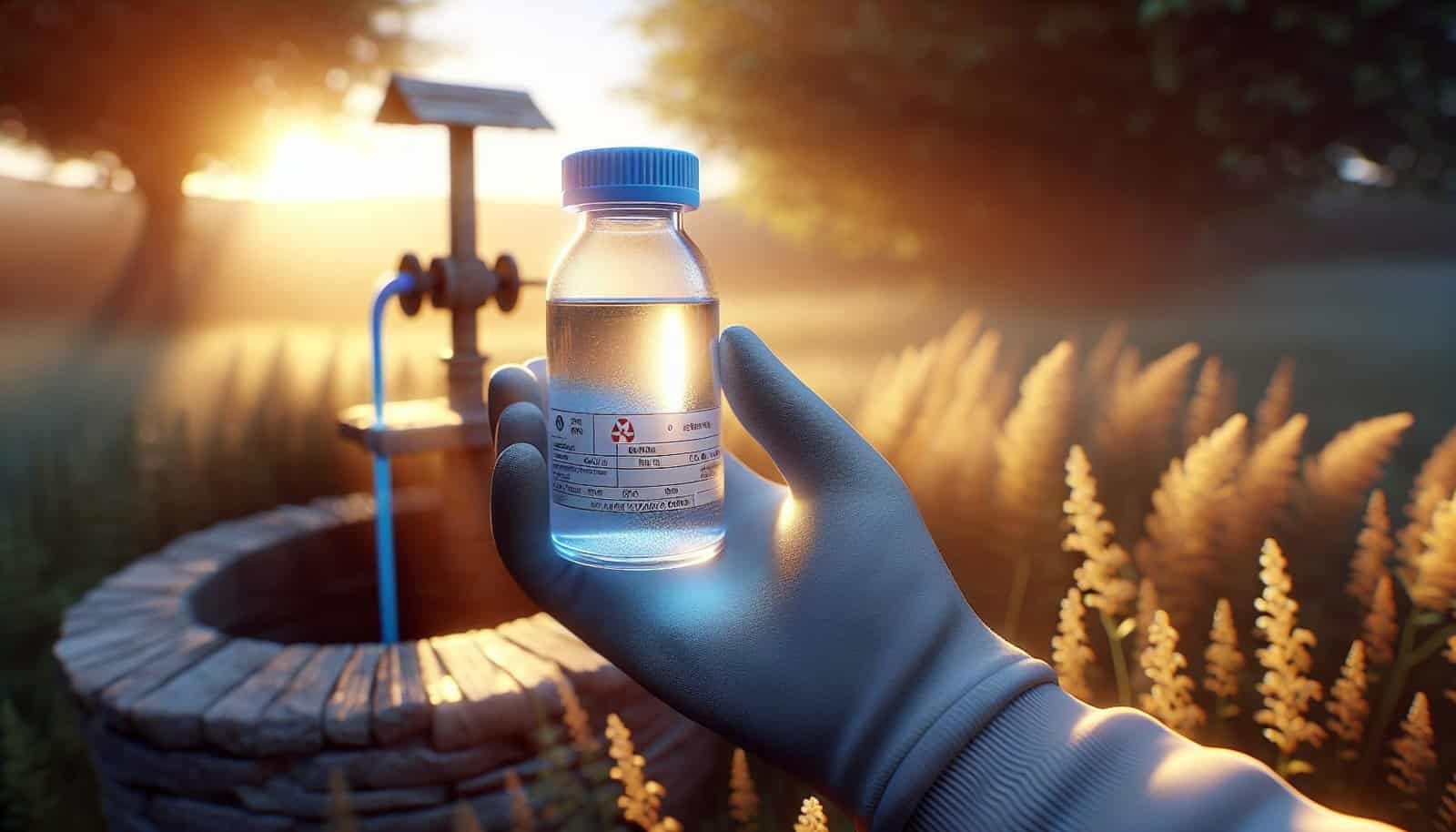?Are you wondering how to test your well water for uranium or radon and what the results mean for your household?
How Do I Test My Well For Uranium Or Radon?
You’ll learn practical, step-by-step guidance on testing your well for uranium and radon, how to collect reliable samples, where to send them, how to interpret results, and what to do if levels are elevated. This information will help you protect your health and make informed decisions about water treatment.
Why you should test your well
Testing is the only way to know whether your well water contains uranium or radon. Both contaminants can occur naturally in groundwater depending on local geology, and both can pose health risks with long-term exposure. Regular testing helps you detect problems early and choose appropriate solutions for treatment or alternative water sources.
What uranium and radon are — and how they differ
Uranium is a radioactive metal found in some rocks and soils. It can dissolve into groundwater and enter your drinking water supply. Radon is a radioactive gas produced by the decay of uranium in soil and rock; it can dissolve into groundwater too and escape from water into the air when you use the water.
- Uranium in water is mainly a chemical and radiological concern when ingested.
- Radon is a gas that contributes primarily to airborne exposure when released from water during household uses (showering, cooking), but ingestion of radon in water is also possible.
Understanding those differences will help you choose the right tests and treatments.

Quick comparison: uranium vs. radon
| Feature | Uranium | Radon |
|---|---|---|
| Type | Radioactive metal | Radioactive gas |
| Main exposure route of concern | Drinking water ingestion | Inhalation of air released from water; ingestion less critical |
| Typical testing method | Laboratory water analysis (ICP-MS, alpha spectrometry) | Liquid scintillation of water or measurement of indoor air (air monitors) |
| Common removal methods | Ion exchange, reverse osmosis, lime softening | Aeration systems, granular activated carbon (GAC) for water; air mitigation for indoor air |
| Regulatory status | EPA MCL = 30 µg/L (uranium) | No federal MCL for radon in water; EPA action level for indoor air = 4 pCi/L |
When you should test your well
You should test:
- When you first install a new well or move into a home with a private well.
- If you notice unusual taste, staining, or health concerns in your household.
- If your area’s geology is known to contain uranium-bearing rocks or radon-prone soils.
- After major well repairs, drilling, or if nearby land-use changes could affect groundwater.
- Regularly as part of routine well maintenance: many professionals recommend at least every 1–3 years for radiological concerns, but check local guidance.

How testing for uranium works
Testing for uranium requires a properly collected water sample submitted to a qualified laboratory. Laboratories typically use methods such as inductively coupled plasma mass spectrometry (ICP-MS) or alpha spectrometry to measure uranium concentrations in micrograms per liter (µg/L).
Key steps you’ll follow:
- Use a certified lab or state lab that analyzes for radiological contaminants.
- Request the correct sample container and preservation instructions (often acid-preserved bottles).
- Flush the plumbing and collect a representative sample from the tap you normally use for drinking water.
- Keep the sample cool and deliver it to the lab promptly to meet holding time requirements.
How testing for radon in well water works
There are two approaches you can take for radon related to your well:
- Test indoor air for radon to see the overall airborne risk. The EPA action level for indoor air is 4 picocuries per liter (pCi/L).
- Test the well water directly for radon using a water test kit or a laboratory that performs radon-in-water analysis (commonly by liquid scintillation counting).
Testing the water directly measures the radon concentration in picocuries per liter (pCi/L) of water. If water radon is high, it can contribute to indoor air radon when water is used. Many radon professionals recommend testing both water and air when radon is suspected.

Testing methods: overview and pros/cons
| Target | Method | Pros | Cons |
|---|---|---|---|
| Uranium | Laboratory water analysis (ICP-MS, alpha spectrometry) | Accurate, sensitive, provides numerical concentration | Requires chain-of-custody sample, lab fees |
| Radon in water | Liquid scintillation laboratory analysis | Accurate, designed for low-level detection | Requires timely delivery and careful sampling |
| Radon in air | Short-term or long-term air test kits (alpha track, charcoal, electronic monitors) | Direct measure of indoor risk; simple home kits available | Air tests won’t tell you if water is the source unless paired with water testing |
Choosing between DIY kits and certified labs
You can buy home test kits for radon in indoor air, and some kits measure radon in water. However, for uranium and for precise regulatory or remediation decisions, you should use a certified laboratory. DIY kits can be useful for preliminary screening.
Table: DIY kits vs certified labs
| Factor | DIY kit | Certified laboratory |
|---|---|---|
| Convenience | High | Requires sample drop-off or shipping |
| Cost | Lower | Higher but more comprehensive |
| Accuracy | Good for screening | Higher accuracy and legally defensible |
| Certification | Usually not | NELAP/state-certified labs available |
| Use case | Initial screening, homeowner awareness | Regulatory compliance, treatment decision-making |

Step-by-step: how to collect a water sample correctly
Proper sampling is crucial to get reliable results.
- Contact the lab first. Ask for the right containers, preservatives, and holding times.
- Use a cold water tap that’s used for drinking. Avoid softeners or filters unless you specifically want post-treatment results.
- Run the tap for a few minutes to get fresh well water from the aquifer (this avoids standing water from plumbing).
- For uranium: labs often supply acid-preserved bottles; fill per lab instructions and cap tightly.
- For radon-in-water: the collection often requires minimizing air contact. Labs may ask you to fill the bottle with no air space for accurate results.
- Label the sample with date/time, sample point, and your contact.
- Keep the sample cool and deliver it quickly to the lab within the holding time (labs will specify how fast).
Quality assurance and chain-of-custody
If your results will be used for regulatory or property transfer purposes, ask for chain-of-custody forms and certified lab methods. This ensures sample integrity and legal defensibility. Even for private testing, follow lab instructions exactly to avoid invalid results.

How to choose a lab
Look for:
- State certification or National Environmental Laboratory Accreditation Program (NELAP) accreditation.
- Experience with radiological testing (uranium, radon).
- Clear instructions for sample collection and acceptable holding times.
- Good customer service that explains results and detection limits.
Contact your state health department or state environmental agency if you need a list of certified labs.
How to interpret uranium results
The U.S. Environmental Protection Agency (EPA) has a maximum contaminant level (MCL) for uranium in drinking water set at 30 micrograms per liter (µg/L). If your water is below that level, it meets the federal standard, but you can still consider treatment depending on cumulative exposures and other contaminants.
If your result is above 30 µg/L:
- Consider treatment options to remove uranium before drinking or cooking.
- Contact your state health department or local environmental agency for guidance.
- Avoid using untreated well water for drinking and cooking until you install mitigation or use an alternative water source.
How to interpret radon results
There is no federal MCL specifically for radon in drinking water. Because radon is primarily a risk via inhalation, the EPA’s indoor air action level of 4 pCi/L is often used to guide decisions:
- If your indoor air radon is 4 pCi/L or higher, you should take steps to reduce indoor radon (air-focused mitigation such as sub-slab depressurization).
- If your well water tests high for radon, it can contribute to indoor air radon. Testing both air and water helps determine the source and priority for mitigation.
- State guidelines on radon in water vary; contact your state radon program for specific action levels used locally.
If you get unexpected or borderline results, discuss them with the testing lab and your state public health agency for interpretation.
Typical treatment options for uranium
Common methods for removing uranium from drinking water include:
- Ion exchange: Effective for uranium and can treat whole-house flow. It exchanges uranium ions for other ions on a resin. Requires regeneration and disposal of brine.
- Reverse osmosis (RO): Very effective; typically installed at point-of-use (under-sink) for drinking/cooking water. Whole-house RO is expensive.
- Lime softening/coagulation and filtration: Effective in some water chemistries for larger, centralized systems.
Table: Uranium treatment options
| Method | Typical use | Pros | Cons |
|---|---|---|---|
| Ion exchange | Whole-house or point-of-entry | Effective, continuous removal | Requires regeneration, brine disposal |
| Reverse osmosis | Point-of-use | High removal efficiency | Wastes some water, requires maintenance |
| Lime softening/coagulation | Larger systems | Can remove uranium and soften water | Complex, needs skilled operation |
Typical treatment options for radon in water
For radon in water, the main approaches are:
- Aeration: Exposes water to air so radon transfers from water to air, which is then vented outside. Highly effective; packed tower aeration systems work for whole-house applications.
- Granular activated carbon (GAC): Adsorbs radon from water. Effective but can accumulate radioactivity and may require disposal as low-level radioactive waste depending on activity and local regulations.
- Point-of-use aeration: For households where only drinking water needs remediation.
Table: Radon-in-water treatment options
| Method | Typical use | Pros | Cons |
|---|---|---|---|
| Aeration (packed tower) | Whole-house | Very effective, no radioactive waste | Requires space and proper venting |
| GAC | Point-of-use or whole-house | Compact | Accumulates radioactivity; disposal/regulatory issues |
| Point-of-use aeration | Drinking water only | Cost-effective for limited use | Doesn’t protect from radon in water used elsewhere (showers, laundry) |
Costs and practical considerations
Treatment costs vary widely depending on system type and scale. Point-of-use RO systems might range from a few hundred to a few thousand dollars including installation. Whole-house aeration or ion-exchange systems can be several thousand dollars. Ongoing maintenance (media replacement, resin regeneration, filter changes) adds to lifetime cost.
When considering options, factor in:
- Volume of water used in your household
- Water chemistry (hardness, iron, pH) affecting treatment performance
- Waste streams (brine or GAC disposal)
- Space and venting requirements for aeration
What to do if your results are high
- Confirm results by repeating the test (use a certified lab).
- For uranium above the EPA MCL, don’t use untreated water for drinking/cooking until you install treatment or use bottled water.
- For indoor air radon above 4 pCi/L, arrange for air mitigation (sub-slab depressurization or other proven methods). If water contributes significantly, treat the water source as well.
- Contact your state health department, local environmental agency, or a qualified water treatment professional to evaluate options and costs.
- Keep records of tests and treatments for future reference or property transactions.
Retesting and after-treatment monitoring
- After installing a treatment system, retest to confirm removal efficiency. Many professionals suggest sampling after installation and again periodically, such as every 6–12 months initially, then annually.
- If you rely on a point-of-use device, test both before and after the device to ensure it’s working.
- For radon, retest indoor air after water treatment to verify whether water treatment reduced airborne radon.
Health effects summarized (what you should know)
- Uranium: Long-term ingestion of elevated uranium may affect the kidneys and increase long-term cancer risk. You should reduce exposure by treating water or using alternative sources if levels exceed recommended limits.
- Radon: The main risk is lung cancer from inhaling radon decay products in air. Radon in water can add to indoor air levels and also pose ingestion risks, though inhalation is the primary concern. Reducing indoor air radon to below 4 pCi/L is a common goal.
Tips to get reliable test results
- Follow lab instructions exactly for sample containers, preservatives, and holding times.
- Avoid cross-contamination—don’t use taps with treatment devices unless specifically testing treated water.
- Keep accurate records: sample location, date/time, and what you used the sample for.
- Ask for method detection limits and reporting limits so you understand what “non-detect” means.
Legal and real estate considerations
If you sell your property, many states require disclosure of known well contaminants and test results. Buyers often request recent water testing as part of home inspections. Keep your test records and treatment documentation handy.
Who can help you
- Your state or local health department and state radon program can offer guidance, lists of certified labs, and sometimes free or subsidized test kits.
- Certified private laboratories accredited by state programs or NELAP.
- Licensed water treatment professionals experienced with radiological contaminants.
- Radon mitigation professionals certified by recognized programs for indoor air mitigation.
Summary: practical next steps for you
- Determine if your area’s geology or local testing history suggests risk for uranium or radon.
- Contact a certified lab or your state health department to obtain testing instructions and sample containers.
- Collect water and/or air samples following lab directions to get reliable results.
- Interpret results with help from the lab or state agency; remember EPA’s uranium MCL is 30 µg/L and EPA’s indoor air action level for radon is 4 pCi/L.
- If results are elevated, confirm with repeat testing, consult experts, and implement appropriate treatment or mitigation.
- Maintain records and retest periodically or after any changes to your well or plumbing.
If you’d like, tell me where you live (state/region) and I can give more specific recommendations for labs, state programs, and likely geological risks in your area.
